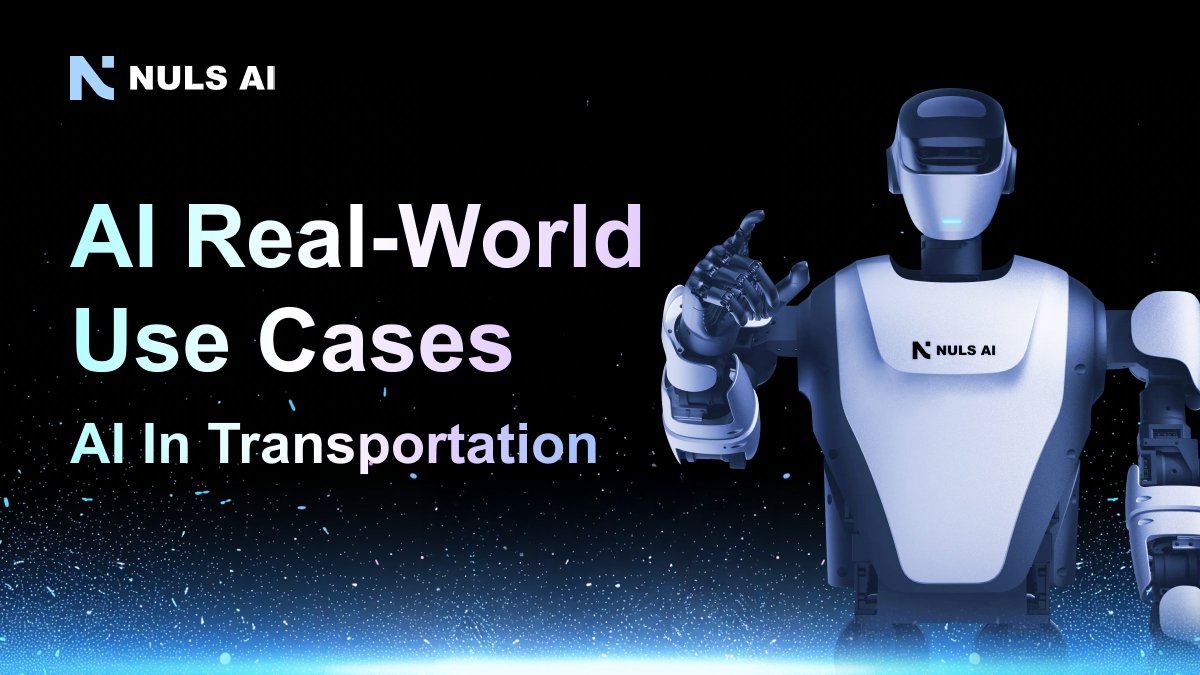
NULS
NULS hinta
$0,060570
-$0,00023
(−0,38 %)
Hinnanmuutos viimeisen 24 tunnin ajalta

Mitä olet mieltä NULS-rahakkeista tänään?
Jaa tunnelmasi täällä lisäämällä peukku ylös, jos olet optimistinen kolikon suhteen, tai peukku alas, jos olet negatiivinen kolikon suhteen.
Äänestä nähdäksesi tulokset
Vastuuvapauslauseke
Tällä sivulla oleva sosiaalinen sisältö (”sisältö”), mukaan lukien muun muassa LunarCrushin tarjoamat twiitit ja tilastot, on peräisin kolmansilta osapuolilta ja se tarjotaan sellaisenaan vain tiedotustarkoituksiin. OKX ei takaa sisällön laatua tai tarkkuutta, eikä sisältö edusta OKX:n näkemyksiä. Sen tarkoituksena ei ole tarjota (i) sijoitusneuvontaa tai -suositusta, (ii) tarjousta tai kehotusta ostaa, myydä tai pitää hallussa digitaalisia varoja tai (iii) taloudellista, kirjanpidollista, oikeudellista tai veroperusteista neuvontaa. Digitaalisiin varoihin, kuten vakaakolikkoihin ja NFT:ihin, liittyy suuri riski, ja niiden arvo voi vaihdella suuresti. Digitaalisten varojen hintaa ja tuottoa ei ole taattu, ja ne voivat muuttua ilman ennakkoilmoitusta.
OKX ei tarjoa sijoitus- tai omaisuussuosituksia. Sinun on harkittava huolellisesti, sopiiko digitaalisten varojen treidaus tai hallussapito sinulle taloudellisen tilanteesi huomioon ottaen. Ota yhteyttä laki-/vero-/sijoitusalan ammattilaiseen, jos sinulla on kysyttävää omaan tilanteeseesi liittyen. Lisätietoja on käyttöehdoissa ja riskivaroituksessa. Käyttämällä kolmannen osapuolen verkkosivustoa (”TPW”) hyväksyt, että kolmannen osapuolen verkkosivuston käyttöön sovelletaan kolmannen osapuolen verkkosivuston ehtoja. Ellei nimenomaisesti kirjallisesti toisin mainita, OKX ja sen kumppanit (”OKX”) eivät ole millään tavalla yhteydessä kolmannen osapuolen verkkosivuston omistajaan tai operaattoriin. Hyväksyt, että OKX ei ole vastuussa mistään menetyksistä, vahingoista tai muista seurauksista, jotka aiheutuvat kolmannen osapuolen verkkosivuston käytöstäsi. Huomaathan, että kolmannen osapuolen verkkosivun käyttö voi johtaa varojesi menetykseen tai vähenemiseen. Tuote ei välttämättä ole saatavilla kaikilla lainkäyttöalueilla.
OKX ei tarjoa sijoitus- tai omaisuussuosituksia. Sinun on harkittava huolellisesti, sopiiko digitaalisten varojen treidaus tai hallussapito sinulle taloudellisen tilanteesi huomioon ottaen. Ota yhteyttä laki-/vero-/sijoitusalan ammattilaiseen, jos sinulla on kysyttävää omaan tilanteeseesi liittyen. Lisätietoja on käyttöehdoissa ja riskivaroituksessa. Käyttämällä kolmannen osapuolen verkkosivustoa (”TPW”) hyväksyt, että kolmannen osapuolen verkkosivuston käyttöön sovelletaan kolmannen osapuolen verkkosivuston ehtoja. Ellei nimenomaisesti kirjallisesti toisin mainita, OKX ja sen kumppanit (”OKX”) eivät ole millään tavalla yhteydessä kolmannen osapuolen verkkosivuston omistajaan tai operaattoriin. Hyväksyt, että OKX ei ole vastuussa mistään menetyksistä, vahingoista tai muista seurauksista, jotka aiheutuvat kolmannen osapuolen verkkosivuston käytöstäsi. Huomaathan, että kolmannen osapuolen verkkosivun käyttö voi johtaa varojesi menetykseen tai vähenemiseen. Tuote ei välttämättä ole saatavilla kaikilla lainkäyttöalueilla.
NULS markkinatiedot
Markkina-arvo
Markkina-arvo lasketaan kertomalla kolikon kierrossa oleva tarjonta sen viimeisellä hinnalla.
Markkina-arvo = kierrossa oleva tarjonta × viimeinen hinta
Markkina-arvo = kierrossa oleva tarjonta × viimeinen hinta
Kierrossa oleva tarjonta
Kolikon kokonaissumma, joka on julkisesti saatavilla markkinoilla.
Markkina-arvorankkaus
Kolikon sijoittuminen markkina-arvon mukaan.
Kaikkien aikojen korkein
Korkein hinta, jonka kolikko on saavuttanut treidaushistoriansa aikana.
Kaikkien aikojen alhaisin
Alin hinta, jonka kolikko on saavuttanut treidaushistoriansa aikana.
Markkina-arvo
$6,88M
Kierrossa oleva tarjonta
112 698 566 NULS
53,66 % /
210 000 000 NULS
Markkina-arvorankkaus
--
Auditoinnit

Viimeisin auditointi: 15.7.2024 klo (UTC+8)
24 h korkein
$0,064730
24 h matalin
$0,060090
Kaikkien aikojen korkein
$7,2496
−99,17 % (-$7,1890)
Viimeksi päivitetty: 11.1.2018 klo (UTC+8)
Kaikkien aikojen alhaisin
$0,023300
+159,95 % (+$0,037270)
Viimeksi päivitetty: 19.4.2025 klo (UTC+8)
NULS-syöte
Seuraava sisältö on peräisin täältä: .

NULS AI
Tervehdi #NULS AILinkiä – fiksu, nopea ja valmiina vapauttamaan sosiaaliset toimintasi.
🤖 Tekoälyn luoma #Twitter sisältö
📅 Automaattinen työntö useille tuotemerkeille ja tuotteille
Lopullinen #Web3 sosiaalinen avustajasi on tulossa. ✨
#AItools #Web3Marketing #AILink
Näytä alkuperäinen
75,25 t.
53

NULS AI
Tekoäly liikenteessä 🚗
Singapore käyttää #AI liikennevalojen optimointiin, mikä lyhentää ruuhka-ajan matka-aikaa 20 % ja vähentää liikenteen päästöjä 15 %.
💡 Blockchain-ajatus: voiko #blockchain tallentaa tekoälyn liikennepäätöksiä tehdäkseen älykkään kaupungin hallinnosta läpinäkyvämpää ja luotettavampaa?
Näytä alkuperäinen
77,99 t.
31
NULS-laskin


NULS-rahakkeen suoritus valuutassa USD
NULS-rahakkeiden nykyinen hinta on $0,060570. Kuluneen 24 tunnin aikana NULS on laski −0,38 %. Sen tämän hetkinen kierrossa oleva tarjonta on 112 698 566 NULS ja sen enimmäistarjonta on 210 000 000 NULS, joten sen täysin dilutoitu markkina-arvo on $6,88M. Tällä hetkellä NULS-kolikko on sijalla 0 markkina-arvotaulukossa. NULS/USD-hinta päivitetään reaaliajassa.
Tänään
-$0,00023
−0,38 %
7 päivää
-$0,00643
−9,60 %
30 päivää
+$0,0020600
+3,52 %
3 kuukautta
-$0,16113
−72,68 %
Suositut NULS muunnokset
Viimeksi päivitetty: 02.06.2025 klo 04.29
| 1 NULS --> USD | 0,061050 $ |
| 1 NULS --> EUR | 0,053800 € |
| 1 NULS --> PHP | 3,4048 PHP |
| 1 NULS --> IDR | 999,35 IDR |
| 1 NULS --> GBP | 0,045356 £ |
| 1 NULS --> CAD | 0,083886 CAD |
| 1 NULS --> AED | 0,22421 AED |
| 1 NULS --> VND | 1 588,60 VND |
Lisätietoja: NULS (NULS)
Arvostelu on OKX:n tarjoamista lähteistä kokoama yhteenlaskettu arvostelu, ja se on tarkoitettu vain tiedoksi. OKX ei takaa arvostelujen laatua tai tarkkuutta. Sen tarkoituksena ei ole tarjota (i) sijoitusneuvontaa tai -suositusta, (ii) tarjousta tai kehotusta ostaa, myydä tai pitää hallussa digitaalisia varoja tai (iii) taloudellista, kirjanpidollista, oikeudellista tai veroperusteista neuvontaa. Digitaalisiin varoihin, kuten vakaakolikkoihin ja NFT:ihin, liittyy suuri riski, niiden arvo voi vaihdella suuresti ja niistä voi jopa tulla arvottomia. Digitaalisten varojen hintaa ja tuottoa ei ole taattu, ja ne voivat muuttua ilman ennakkoilmoitusta. Digitaalisia varojasi ei ole vakuutettu mahdollisten tappioiden varalta. Aiemmat tuotot eivät ole osoitus tulevista tuotoista. OKX ei takaa tuottoa eikä pääoman tai korkojen takaisinsaamista. OKX ei tarjoa sijoitus- tai omaisuussuosituksia. Sinun on harkittava huolellisesti, sopiiko digitaalisten varojen treidaus tai hallussapito sinulle ottaen huomioon taloudellisen tilanteesi. Ota yhteyttä laki-/vero-/sijoitusalan ammattilaiseen, jos sinulla on kysyttävää omaan tilanteeseesi liittyen.
Näytä lisää
- Virallinen verkkosivusto
- White paper
- Github
- Lohkoketjutyökalu
Tietoa kolmansien osapuolten verkkosivustoista
Tietoa kolmansien osapuolten verkkosivustoista
Käyttämällä kolmannen osapuolen verkkosivustoa hyväksyt, että kolmannen osapuolen verkkosivuston käyttöön sovelletaan kolmannen osapuolen verkkosivuston ehtoja. Ellei nimenomaisesti kirjallisesti mainita, OKX ja sen tytäryhtiöt (”OKX”) eivät ole millään tavalla yhteydessä kolmannen osapuolen verkkosivuston omistajaan tai ylläpitäjään. Hyväksyt, että OKX ei ole vastuussa mistään menetyksistä, vahingoista tai muista seurauksista, jotka johtuvat kolmannen osapuolen verkkosivuston käytöstäsi. Huomaa, että kolmannen osapuolen verkkosivuston käyttö voi johtaa varojesi menettämiseen tai vähenemiseen.
NULS UKK
Kuinka paljon 1 NULS on arvoltaan tänään?
Tällä hetkellä yksi NULS on arvoltaan $0,060570. Jos haluat vastauksia ja tietoa NULS-rahakkeen hintakehityksestä, olet oikeassa paikassa. Tutustu uusimpiin NULS-kaavioihin ja treidaa vastuullisesti OKX:ssä.
Mikä on kryptovaluutta?
Kryptovaluutat, kuten NULS, ovat digitaalisia varoja, jotka toimivat lohkoketjuiksi kutsutussa julkisessa pääkirjassa. Lue lisää OKX:ssä tarjottavista kolikoista ja rahakkeista ja niiden eri ominaisuuksista, joihin kuuluvat reaaliaikaiset hinnat ja reaaliaikaiset kaaviot.
Milloin kryptovaluutta keksittiin?
Vuoden 2008 finanssikriisin ansiosta kiinnostus hajautettua rahoitusta kohtaan kasvoi. Bitcoin tarjosi uudenlaisen ratkaisun olemalla turvallinen digitaalinen vara hajautetussa verkossa. Sittemmin on luotu myös monia muita rahakkeita, kuten NULS.
Nouseeko NULS-rahakkeiden hinta tänään?
Tutustu NULS-rahakkeiden hintaennustesivu nähdäksesi tulevien hintojen ennusteet ja määrittääksesi hintatavoitteesi.
ESG-tiedonanto
Kryptovaroja koskevien ESG-säännösten (Environmental, Social ja Governance) tavoitteena on puuttua niiden ympäristövaikutuksiin (esim. energiaintensiivinen louhinta), edistää avoimuutta ja varmistaa eettiset hallintokäytännöt, jotta kryptoala olisi linjassa laajempien kestävyyteen ja yhteiskuntaan liittyvien tavoitteiden kanssa. Näillä säännöksillä kannustetaan noudattamaan standardeja, jotka lieventävät riskejä ja edistävät luottamusta digitaalisiin varoihin.
Varan tiedot
Nimi
OKcoin Europe LTD
Asianomaisen oikeudellisen tahon tunniste
54930069NLWEIGLHXU42
Kryptovaran nimi
Nuls
Konsensusmekanismi
Nuls is present on the following networks: Binance Smart Chain, Ethereum, Huobi, Nuls, Okc Token.
Binance Smart Chain (BSC) uses a hybrid consensus mechanism called Proof of Staked Authority (PoSA), which combines elements of Delegated Proof of Stake (DPoS) and Proof of Authority (PoA). This method ensures fast block times and low fees while maintaining a level of decentralization and security. Core Components 1. Validators (so-called “Cabinet Members”): Validators on BSC are responsible for producing new blocks, validating transactions, and maintaining the network’s security. To become a validator, an entity must stake a significant amount of BNB (Binance Coin). Validators are selected through staking and voting by token holders. There are 21 active validators at any given time, rotating to ensure decentralization and security. 2. Delegators: Token holders who do not wish to run validator nodes can delegate their BNB tokens to validators. This delegation helps validators increase their stake and improves their chances of being selected to produce blocks. Delegators earn a share of the rewards that validators receive, incentivizing broad participation in network security. 3. Candidates: Candidates are nodes that have staked the required amount of BNB and are in the pool waiting to become validators. They are essentially potential validators who are not currently active but can be elected to the validator set through community voting. Candidates play a crucial role in ensuring there is always a sufficient pool of nodes ready to take on validation tasks, thus maintaining network resilience and decentralization. Consensus Process 4. Validator Selection: Validators are chosen based on the amount of BNB staked and votes received from delegators. The more BNB staked and votes received, the higher the chance of being selected to validate transactions and produce new blocks. The selection process involves both the current validators and the pool of candidates, ensuring a dynamic and secure rotation of nodes. 5. Block Production: The selected validators take turns producing blocks in a PoA-like manner, ensuring that blocks are generated quickly and efficiently. Validators validate transactions, add them to new blocks, and broadcast these blocks to the network. 6. Transaction Finality: BSC achieves fast block times of around 3 seconds and quick transaction finality. This is achieved through the efficient PoSA mechanism that allows validators to rapidly reach consensus. Security and Economic Incentives 7. Staking: Validators are required to stake a substantial amount of BNB, which acts as collateral to ensure their honest behavior. This staked amount can be slashed if validators act maliciously. Staking incentivizes validators to act in the network's best interest to avoid losing their staked BNB. 8. Delegation and Rewards: Delegators earn rewards proportional to their stake in validators. This incentivizes them to choose reliable validators and participate in the network’s security. Validators and delegators share transaction fees as rewards, which provides continuous economic incentives to maintain network security and performance. 9. Transaction Fees: BSC employs low transaction fees, paid in BNB, making it cost-effective for users. These fees are collected by validators as part of their rewards, further incentivizing them to validate transactions accurately and efficiently.
The crypto-asset's Proof-of-Stake (PoS) consensus mechanism, introduced with The Merge in 2022, replaces mining with validator staking. Validators must stake at least 32 ETH every block a validator is randomly chosen to propose the next block. Once proposed the other validators verify the blocks integrity. The network operates on a slot and epoch system, where a new block is proposed every 12 seconds, and finalization occurs after two epochs (~12.8 minutes) using Casper-FFG. The Beacon Chain coordinates validators, while the fork-choice rule (LMD-GHOST) ensures the chain follows the heaviest accumulated validator votes. Validators earn rewards for proposing and verifying blocks, but face slashing for malicious behavior or inactivity. PoS aims to improve energy efficiency, security, and scalability, with future upgrades like Proto-Danksharding enhancing transaction efficiency.
The Huobi Eco Chain (HECO) blockchain employs a Hybrid-Proof-of-Stake (HPoS) consensus mechanism, combining elements of Proof-of-Stake (PoS) to enhance transaction efficiency and scalability. Key Features of HECO's Consensus Mechanism: 1. Validator Selection: HECO supports up to 21 validators, selected based on their stake in the network. 2. Transaction Processing: Validators are responsible for processing transactions and adding blocks to the blockchain. 3. Transaction Finality: The consensus mechanism ensures quick finality, allowing for rapid confirmation of transactions. 4. Energy Efficiency: By utilizing PoS elements, HECO reduces energy consumption compared to traditional Proof-of-Work systems.
NULS employs a Proof of Credit (PoC) consensus mechanism, designed to balance scalability, decentralization, and security. PoC incentivizes active participation and provides modular flexibility for diverse blockchain applications. Core Components: Credit-Based Staking: Validators, called consensus nodes, are selected based on their staked NULS tokens and network credit score. The credit score is determined by consistent uptime and reliable node operation. Consensus Nodes: Nodes validate transactions and produce blocks, earning rewards proportional to their staked amount and credit score. A flexible number of nodes participate in consensus, ensuring adaptability to network size and demand. Customizable Consensus: PoC integrates seamlessly with NULS’ modular architecture, enabling developers to customize the consensus protocol for sidechains and specific use cases. Instant Finality: Transactions are finalized immediately after block validation, enhancing speed and reducing the risk of forks.
OKC, also known as OKX Chain, is an EVM-compatible Layer-1 blockchain built on the Cosmos SDK. It employs a Delegated Proof of Stake (DPoS) consensus mechanism, enhanced by Tendermint's Byzantine Fault Tolerant (BFT) protocol. In this system, OKT token holders delegate their tokens to validators, who are responsible for validating transactions and producing new blocks. Additionally, OKC supports interoperability through the Inter-Blockchain Communication (IBC) protocol, facilitating seamless value transfer between blockchains within the Cosmos ecosystem.
Kannustinmekanismit ja sovellettavat maksut
Nuls is present on the following networks: Binance Smart Chain, Ethereum, Huobi, Nuls, Okc Token.
Binance Smart Chain (BSC) uses the Proof of Staked Authority (PoSA) consensus mechanism to ensure network security and incentivize participation from validators and delegators. Incentive Mechanisms 1. Validators: Staking Rewards: Validators must stake a significant amount of BNB to participate in the consensus process. They earn rewards in the form of transaction fees and block rewards. Selection Process: Validators are selected based on the amount of BNB staked and the votes received from delegators. The more BNB staked and votes received, the higher the chances of being selected to validate transactions and produce new blocks. 2. Delegators: Delegated Staking: Token holders can delegate their BNB to validators. This delegation increases the validator's total stake and improves their chances of being selected to produce blocks. Shared Rewards: Delegators earn a portion of the rewards that validators receive. This incentivizes token holders to participate in the network’s security and decentralization by choosing reliable validators. 3. Candidates: Pool of Potential Validators: Candidates are nodes that have staked the required amount of BNB and are waiting to become active validators. They ensure that there is always a sufficient pool of nodes ready to take on validation tasks, maintaining network resilience. 4. Economic Security: Slashing: Validators can be penalized for malicious behavior or failure to perform their duties. Penalties include slashing a portion of their staked tokens, ensuring that validators act in the best interest of the network. Opportunity Cost: Staking requires validators and delegators to lock up their BNB tokens, providing an economic incentive to act honestly to avoid losing their staked assets. Fees on the Binance Smart Chain 5. Transaction Fees: Low Fees: BSC is known for its low transaction fees compared to other blockchain networks. These fees are paid in BNB and are essential for maintaining network operations and compensating validators. Dynamic Fee Structure: Transaction fees can vary based on network congestion and the complexity of the transactions. However, BSC ensures that fees remain significantly lower than those on the Ethereum mainnet. 6. Block Rewards: Incentivizing Validators: Validators earn block rewards in addition to transaction fees. These rewards are distributed to validators for their role in maintaining the network and processing transactions. 7. Cross-Chain Fees: Interoperability Costs: BSC supports cross-chain compatibility, allowing assets to be transferred between Binance Chain and Binance Smart Chain. These cross-chain operations incur minimal fees, facilitating seamless asset transfers and improving user experience. 8. Smart Contract Fees: Deployment and Execution Costs: Deploying and interacting with smart contracts on BSC involves paying fees based on the computational resources required. These fees are also paid in BNB and are designed to be cost-effective, encouraging developers to build on the BSC platform.
The crypto-asset's PoS system secures transactions through validator incentives and economic penalties. Validators stake at least 32 ETH and earn rewards for proposing blocks, attesting to valid ones, and participating in sync committees. Rewards are paid in newly issued ETH and transaction fees. Under EIP-1559, transaction fees consist of a base fee, which is burned to reduce supply, and an optional priority fee (tip) paid to validators. Validators face slashing if they act maliciously and incur penalties for inactivity. This system aims to increase security by aligning incentives while making the crypto-asset's fee structure more predictable and deflationary during high network activity.
The Huobi Eco Chain (HECO) blockchain employs a Hybrid-Proof-of-Stake (HPoS) consensus mechanism, combining elements of Proof-of-Stake (PoS) to enhance transaction efficiency and scalability. Incentive Mechanism: 1. Validator Rewards: Validators are selected based on their stake in the network. They process transactions and add blocks to the blockchain. Validators receive rewards in the form of transaction fees for their role in maintaining the blockchain's integrity. 2. Staking Participation: Users can stake Huobi Token (HT) to become validators or delegate their tokens to existing validators. Staking helps secure the network and, in return, participants receive a portion of the transaction fees as rewards. Applicable Fees: 1. Transaction Fees (Gas Fees): Users pay gas fees in HT tokens to execute transactions and interact with smart contracts on the HECO network. These fees compensate validators for processing and validating transactions. 2. Smart Contract Execution Fees: Deploying and interacting with smart contracts incur additional fees, which are also paid in HT tokens. These fees cover the computational resources required to execute contract code.
NULS employs a balanced reward system to incentivize network participation and ensure sustainability, while maintaining a cost-effective fee structure for users. Incentive Mechanism: Staking Rewards: Validators (consensus nodes) earn NULS tokens for validating transactions and producing blocks. Rewards are proportional to their staked tokens and credit score. Token holders can delegate their NULS to validators, earning a share of the staking rewards. Credit Score System: Validators with higher credit scores receive better rewards, incentivizing consistent performance and reliable participation. Node Operation Incentives: Node operators are rewarded for providing network stability, promoting active and trustworthy participation in consensus. Applicable Fees: Transaction Fees: Users pay fees in NULS for transferring assets and executing smart contracts. These fees are distributed to validators and delegators as rewards. Customizable Fee Structure: Sidechains built on the NULS platform can define their own fee models, making the ecosystem adaptable to diverse use cases. Cost Efficiency: NULS prioritizes low transaction fees to encourage adoption and support scalability.
Within the OKC ecosystem, users pay transaction fees, typically less than $0.01, for executing operations on the network. These fees are distributed to validators as rewards for their services in maintaining network security and processing transactions.
Sen kauden alku, jota ilmoitus koskee
2024-05-31
Sen kauden päättyminen, jota ilmoitus koskee
2025-05-31
Energiaraportti
Energian kulutus
19723.75527 (kWh/a)
Energiankulutuksen lähteet ja menetelmät
The energy consumption of this asset is aggregated across multiple components:
For the calculation of energy consumptions, the so called “bottom-up” approach is being used. The nodes are considered to be the central factor for the energy consumption of the network. These assumptions are made on the basis of empirical findings through the use of public information sites, open-source crawlers and crawlers developed in-house. The main determinants for estimating the hardware used within the network are the requirements for operating the client software. The energy consumption of the hardware devices was measured in certified test laboratories. When calculating the energy consumption, we used - if available - the Functionally Fungible Group Digital Token Identifier (FFG DTI) to determine all implementations of the asset of question in scope and we update the mappings regulary, based on data of the Digital Token Identifier Foundation.
To determine the energy consumption of a token, the energy consumption of the network(s) binance_smart_chain, ethereum, huobi, okc_token is calculated first. For the energy consumption of the token, a fraction of the energy consumption of the network is attributed to the token, which is determined based on the activity of the crypto-asset within the network. When calculating the energy consumption, the Functionally Fungible Group Digital Token Identifier (FFG DTI) is used - if available - to determine all implementations of the asset in scope. The mappings are updated regularly, based on data of the Digital Token Identifier Foundation.
NULS-laskin

















Sosiaaliset tiedot